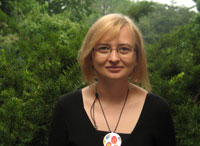| Posted: September 1, 2010 |
International Sunbelt Social Network Conference - The case of nanotechnology |
|
(Nanowerk News) The 30th International Sunbelt Social Network Conference (Sunbelt XXX) was held June 29 to July 4, 2010 in Trento, Italy. This is the official conference for the International Network for Social Network Analysis (INSNA).
|
|
SLIS faculty member Stasa Milojevic presented a paper at the conference titled: "The Case of Nanotechnology"
|
|
Talk Abstract:
|
"Most studies of social structure of scientific fields using social network analysis focus on collaboration networks based on the coauthoring events. The resulting networks depict whole fields or disciplines, with special attention being paid to cohesion, embeddedness and network topologies.

|
| Stasa Milojevic
|
These analyses, however, do not reveal field dynamics at the level of subfields. In this study I examine the social structure of nanoscience/nanotechnology at the level of individual subfields, focusing on collaboration patterns both within and among different subfields. Within-subfield collaboration analysis provides great insights into different cultures of publication, authorship and collaboration. The among-subfield analysis is useful in examining how open the subfields are to collaboration with other subfields. This is of particular importance in examining properties such as interdisciplinarity and transdisciplinarity in modern science fields such as nanoscience.
|
|
The results of this study show that different subfields of nanoscience exhibit different collaboration patterns, indicating that different scientific practices and cultures originating from different parent disciplines are driving the collaborative behavior of researchers within different nanoscience subfields. The results of the analysis of the collaboration among different subfields indicate that scientists within particular subfields strongly collaborate with others from the same subfield, although not at the same level. The results also show that two subfields in physics ensure cohesion among the authors working in almost all other fields. This might suggest that nanoscience exhibits the properties of transdisciplinarity."
|

